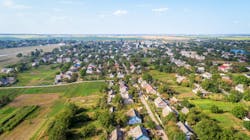Outlying suburbs, or exurbs, have been the shining star of the pandemic housing market but with an increase of workers headed back to the office and vulnerability to economic downturns, the future of the exurbs are unknown. Add in more uncertainties with the delta variant and it’s unclear whether or not the rising exurb home prices will stay afloat, says Realtor.com. The site’s chief economist says some areas saw price increases because of their attractiveness during the pandemic and those prices might not have much ground to stand on in the future. But the ongoing demand for homes and shortage of listings uplifts demand for exurbs.
“The desire for affordability, which is only going to become more important as interest rates go up, is going to keep interest in the suburbs and outer suburbs high. They have always been the escape valve for high city prices,” says Hale.
“It’s not a new phenomenon that, when people can’t afford the city, they look further out,” she continues.
The potential staying power of the work-from-home phenomenon will also likely prevent prices from slipping too much. If workers can go entirely remote or commute only once or twice a week, they may be more likely to seek out cheaper real estate in a more bucolic setting.
“I don’t think prices will drop off dramatically,” says Kelly Mangold, who specializes in real estate economics at the consulting firm RCLCO. “Everyone’s not going back to the office five days a week anytime soon.”
Investors, who typically seek out cheaper housing they can buy and flip or rent out, may also give these areas a boost.
“We’ll still see healthy price appreciation,” says Devyn Bachman, vice president of research at John Burns Real Estate Consulting. Or in certain areas that experienced rapid price hikes, “you may see small corrections in these markets.”
On the flip side, more square footage and larger backyards require more maintenance, and many cash-strapped buyers may not want to pay to have all that grass mowed or the snow shoveled. It’s also more expensive to heat a 3,000-square-foot home than one half the size.
